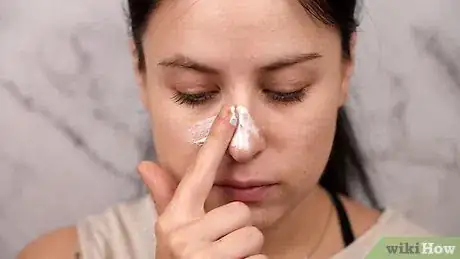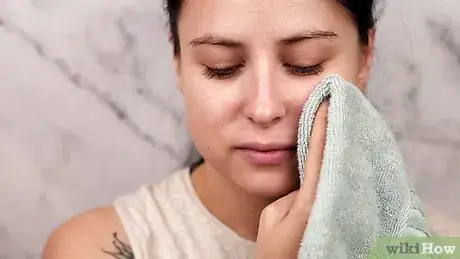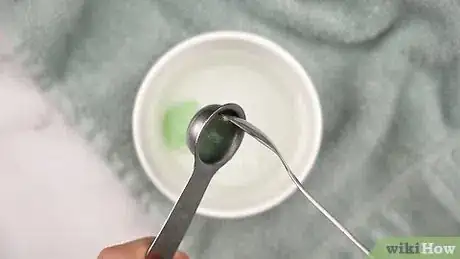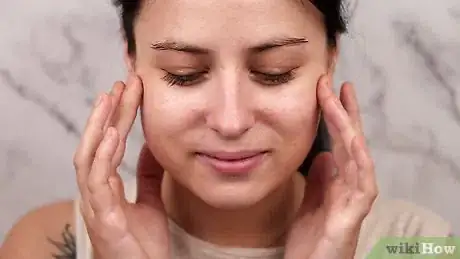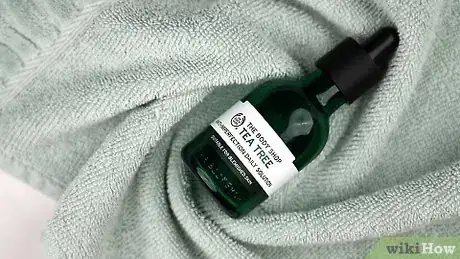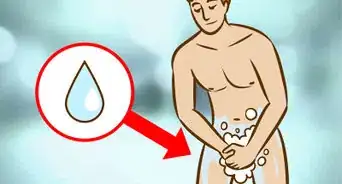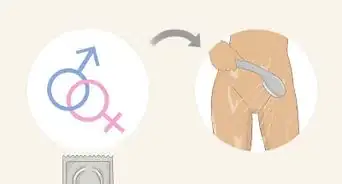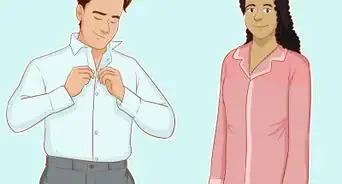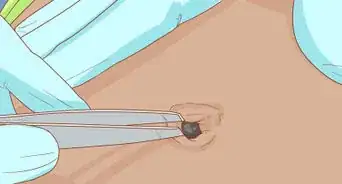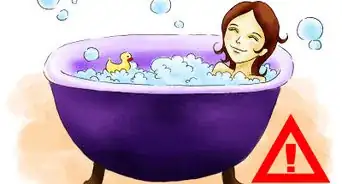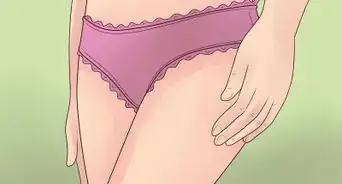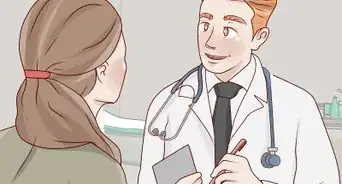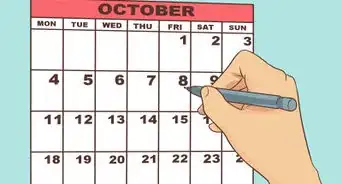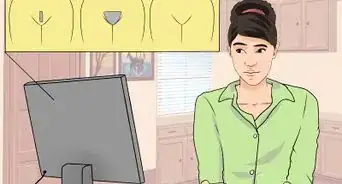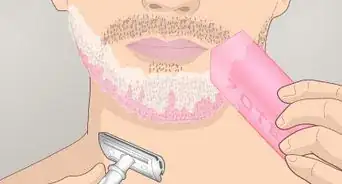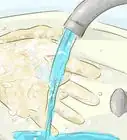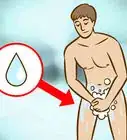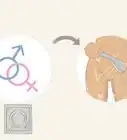wikiHow is a “wiki,” similar to Wikipedia, which means that many of our articles are co-written by multiple authors. To create this article, 32 people, some anonymous, worked to edit and improve it over time.
There are 7 references cited in this article, which can be found at the bottom of the page.
The wikiHow Video Team also followed the article's instructions and verified that they work.
This article has been viewed 496,149 times.
Learn more...
Toothpaste is often cited as a homemade treatment for your skin that can help counter acne. The consensus among dermatologists is that toothpaste is not an effective way to treat your skin, and can in fact damage your skin. The toothpaste can be an irritant that causes redness and peeling. Some of the ingredients in toothpaste can dry out your skin, and there is no evidence to suggest that this is more effective than conventional treatments. If you do decide to use toothpaste, use it sparingly.[1]
Steps
Using Toothpaste on Individual Spots
-
1Check the toothpaste's ingredients. If you are going to use toothpaste to try and clean your face, you should check the ingredients on the tube before you go any further. A number of the ingredients commonly found in toothpaste can significantly irritate your skin.
- If your toothpaste contains sodium lauryl sulfate, triclosan, and/or sodium fluoride, then think again about using it.
- These ingredients in particular are known as irritants to the skin.
- Ingredients such as calcium carbonate and zinc can have a more positive effect on your skin, but these can be found in specialist treatments which don't include the irritants.[2]
- Plain white toothpaste may contain fewer irritants than clear gels.
-
2Apply a small amount to clean skin. If you decide to proceed with using toothpaste, it's sensible to test it out first. Apply small amounts to your skin in a few different places. If your skin reddens, becomes excessively dry or discoloured you should not continue to use toothpaste directly on your skin.
- If you don't have a bad reaction, apply a small amount to a spot and allow it dry.
- You can use a q-tip to do this. If you use your fingers, be sure to wash your hands first.
- Keep an eye on your skin around the toothpaste. If it becomes irritated or sore, wash it off immediately.
Advertisement -
3Wash it off. Given that the benefits of using toothpaste on spots are unclear at best, the amount of time you need to leave it on your skin is not fixed. Some people leave the toothpaste on overnight, but if you have sensitive skin this prolonged exposure could cause irritation. Be conservative in order to minimise the risks of damaging your skin.
- When you wash it off, use warm water and a gentle circular motion.
- Splash some cool water on your face and apply a moisturiser if your skin feels tight and dry.[3]
Making a Toothpaste Face Wash
-
1Make a diluted toothpaste face wash. If you want to use toothpaste to clean more of your face than just a few isolated spots, it's possible to construct a face wash that features toothpaste. Given the potential for toothpaste to irritate your skin, this is generally not recommended. Be sure to test the toothpaste on your skin before considering this.
- There is no fixed formula, but you can just mix a small squeeze of toothpaste in a cup of water.
- You probably shouldn't use more than a teaspoon, but you will have to judge how much of it an irritant it is to your skin.
-
2Gently apply it to your face. Once you have mixed the solution you can gently apply it to a clean face. Lightly brush the liquid onto your skin, ensuring that it does not sting or cause any irritation. Use plenty of water and don't scrub at your skin with your hands.
- If your skin feels sore or irritated wash it off immediately.
- Don't mistake dryness, redness or tightness for an indication that the solution is effectively drying out your pimples.[4]
-
3Wash it off and moisturise. Gently wash it off as you would with any other face wash, and pat your face dry with a soft towel. Given the potential for toothpaste to dry and irritate your skin, it's a good idea to apply a moisturiser to your face after using toothpaste. Ensure your hands are clean before you do this. If your skin is red, sore, or irritated, considered alternative ways to clean your face.
Considering Alternatives
-
1Try an over-the-counter treatment. Toothpaste does contain ingredients that can help dry out spots, but you can buy products that are specifically designed to work on your spots without causing the kind of irritation that the other ingredients in toothpaste can cause. Rather than using toothpaste, try an over-the-counter acne cream or gel to tackle excess oil.
- In particular, you should consider treatments that contain benzoyl peroxide or salicylic acid as the active ingredient.[5]
- You can buy these products at your local pharmacy or drug store.
- Having a good skin care routine is a better way to help prevent spots and have clear skin, than experimenting with home remedies.
-
2Speak to a doctor or dermatologist. If you are having consistent problems with your skin and have been unable to find an over-the-counter treatment that works for you, you can make an appointment to see your doctor or dermatologist. These experts will be able to closely assess your skin and give you advice about what treatments are most suited to your skin-type.[6]
- You may be given a prescription for a topical treatment and/or some medication to take orally.
- Commonly prescribed topical treatments include retinoids, antibiotics, and dapsone.
- You may also be prescribed antibiotics to take orally.[7]
-
3Consider tea tree oil. If you are still keen to try a home remedy to help you get clear skin, tea tee oil is one of the best things to use. Tea tree oil is often used in skin care products but can be bought individually from a drug store or pharmacy. There is research which suggests that tea tree oil can be as effective as benzoyl peroxide when used as a topical treatment for acne.[8]
- Gently dabbing tea tree oil with a q-tip onto a spot is likely to be more effective than toothpaste.
- There will also be less potential for negative side effects and skin irritation.
Community Q&A
-
QuestionIs papaya seed helpful for my face?
 Community AnswerPapaya not only cleanses your skin but also makes your skin glow. It contains rejuvenating enzymes that exfoliate your skin to provide you with a glowing complexion. It's loaded with papain and vitamin A. The enzyme papain breaks down inactive proteins and eliminates dead skin cells.
Community AnswerPapaya not only cleanses your skin but also makes your skin glow. It contains rejuvenating enzymes that exfoliate your skin to provide you with a glowing complexion. It's loaded with papain and vitamin A. The enzyme papain breaks down inactive proteins and eliminates dead skin cells. -
QuestionHow can I stop teen hair loss fast and naturally?
 Community AnswerReduce the use of heat, use an all-natural shampoo and reduce stress in your life.
Community AnswerReduce the use of heat, use an all-natural shampoo and reduce stress in your life. -
QuestionIs it dangerous if I accidentally spread toothpaste all over my face?
 Community AnswerAs long as you don't leave it on too long and you wash your face thoroughly with facial soap afterwards, it won't do any harm. You should try to avoid doing this frequently, though.
Community AnswerAs long as you don't leave it on too long and you wash your face thoroughly with facial soap afterwards, it won't do any harm. You should try to avoid doing this frequently, though.
Warnings
- This is not recommended if you have sensitive skin.⧼thumbs_response⧽
Things You'll Need
- Towel
- Toothpaste
- Cloth
References
- ↑ http://www.huffingtonpost.com/2012/10/23/toothpaste-pimples-acne-dry-out_n_1994320.html
- ↑ https://www.futurederm.com/is-it-ok-to-use-toothpaste-on-skin/
- ↑ http://homeremediesforlife.com/toothpaste-for-pimples-and-acne/
- ↑ http://www.huffingtonpost.com/2012/10/23/toothpaste-pimples-acne-dry-out_n_1994320.html
- ↑ http://www.mayoclinic.org/diseases-conditions/acne/basics/prevention/con-20020580
- ↑ http://www.mayoclinic.org/diseases-conditions/acne/basics/preparing-for-your-appointment/con-20020580
- ↑ http://www.mayoclinic.org/diseases-conditions/acne/basics/treatment/con-20020580
- ↑ https://nccih.nih.gov/health/tea/treeoil.htm
About This Article
To clean your face with toothpaste, start by checking the ingredients list for potential skin irritants like sulfates and flouride. If your toothpaste passes the inspection, try spot-treating individual areas by applying the toothpaste neat. Dab it on the area with clean fingers, let it sit on your skin for a few minutes, then wash it away with warm water. If the area becomes irritated or sore, wash the toothpaste off immediately! To learn how to make a diluted toothpaste cleanser, read on!

